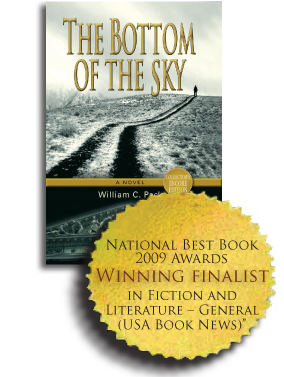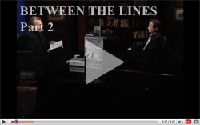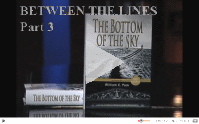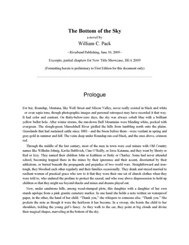Make no mistake, this is a hard story, but know that absolutely all characters and events depicted in The Bottom of the Sky are purely fictional. Any resemblance to persons or events in the real world is coincidental. Seriously.
Dedication
To the righteous who endure and for those who cannot, for the courageous truth-speakers, for the kind.
Love, like loyalty, does not die, not the kind you give nor the kind you receive; whether by neglect or asphyxiation, by poison or trauma, someone has to kill it.
Prologue
For her, Roundup, Montana, like Wall Street and Silicon Valley, never really existed in black and white or even sepia tone, though photographic images and personal retrospect may have recorded it that way. It had color and contrast. On thirty-below-zero days, the sky was always cobalt blue with a brilliant yellow bullet hole. After winter storms, the run-down Bull Mountains were blinding white, pocked with evergreen. The slough-green Musselshell River girdled the hills from tumbling north onto the plains. Grasslands that had sustained cattle since 1881-and the bison before them-were verdant in spring and gray-gold in summer and fall. The veins deep under Roundup ran coal black, and the ones above, crimson red.
Through the middle of the last century, most of the men in town were coal miners with Old Country names like Wilhelm Johnig, Kavka Bublivich, Cian O'Reilly, or Izroc Ketanna, and they went by Shorty or Red or Izzy. They named their children John or Kathleen or Betty or Charley. Some had never attended school, becoming trapped there in the mines by their ignorance and their accent, disoriented by their addictions, or buried beneath the propaganda and prejudice of two world wars. Straightforward and iron-tough, they bloodied each other regularly and their families occasionally. They drank and stayed married to resilient women of practical grace who saw to it that they wore their one set of church clothes when they were told to, who endured the profane to protect the sacred, and who rose above dispossession to hold up children so that they might see beyond shacks and mines and dreams played out.
Now, under sandstone hills, among weed-stumped plots, this daughter with a daughter of her own stands upslope from a pink granite cemetery marker. In one hand she holds a note written on waterproof paper, in the other, the hand of her child. Thank you, she whispers to someone else. Thank you. She pockets the note as though it were the heirloom it has become. In a swoop, she hoists the child to her shoulders, tickling the young girl's fancy. As they walk to the car, they point at big clouds and divine their magical shapes, marveling at the bottom of the sky.
Excerpts:





